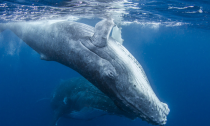
The leatherback turtle is one of our planet’s most distinctive creatures. It can live for decades and grow to weigh up to two tonnes. It is the largest living reptile on Earth and its evolutionary roots reach back more than 100 million years.
“Leatherbacks are living fossils,” says oceanographer Professor Callum Roberts, of York University. “But they are not flourishing. In fact, they are being wiped out at an extraordinary rate, particularly in the Pacific Ocean, where their numbers have declined by 97% over the past three decades. They are now critically endangered there.”
Leatherbacks are suffering for several reasons. They have been hunted for their meat for centuries and the spread of tourist resorts disrupts turtles when they come ashore to lay their eggs on sandy beaches. But the cause of the most recent, most massive decline in numbers of Dermochelys coriacea has a far more pernicious cause: long-line fishing in the high seas.
Some trawlers now drag fishing lines that are more than 75 miles long, each bristling with hooks. Tens ofthousands of sea turtles get snagged on these and drown every year. “It is tragic,” says Roberts.
And this carnage goes unchecked – for the simple reason that there is no protection at all for species, endangered or otherwise, on seas outside national waters. The list includes fish and seabirds, plus fragile ecosystems such as deep-sea corals.
“Outside national waters, in the high seas, it is essentially a no man’s land when it comes to protecting sensitive environments and their inhabitants,” says Paul Snelgrove, a deep-sea biologist at Memorial University in St John’s, Canada. “It is a highly unsatisfactory state of affairs.”
This lack of protection has increasingly vexed conservationists who for more than a decade have been urging that global action must be taken to protect the biodiversity of the high seas. This pressure has now produced an international response. Next month a major conference, organised by the United Nations, will be held in New York in a bid to get governments to agree measures to protect the high seas before their biodiversity is irreparably damaged. This will be followed by other meetings aimed at creating a treaty that would control and protect wildlife by 2020.
“These negotiations represent the greatest opportunity in history to decide the future of our oceans,” said Sandra Schöttner of Greenpeace’s Global Oceans campaign. “The life of our seas – from dolphins and turtles to blue whales – depends on the outcome of the next two years of discussions. Governments now have an opportunity to deliver a treaty that will allow us to protect oceans for the first time.”
Just over 70% of our planet is covered with ocean and of that ocean, 58% lies outside national jurisdiction. These are the high seas and they lie outside the 200 nautical mile limit that extends from individual countries’ shorelines and marks the boundaries of their national waters. Outside these limits, on the high seas, there is simply no effective protection for creatures, plants or habitats.
“It means that more than 40% of the entire surface of the Earth has no protection for its wildlife or habitat,” says Roberts. “It is a highly disturbing situation, to say the least.”
And leatherbacks are certainly not the only creatures that are suffering or heading towards extinction thanks to this failure to provide protection. Numbers of whales, sharks, migratory birds including the albatross and many other creatures are also declining rapidly, with the result that species such as the North Atlantic right whale are now hovering perilously close to extinction. Indeed, whole ecosystems are threatened, as is happening in the Sargasso Sea, in the North Atlantic.
Discovered by Christopher Columbus and noted for the mats of Sargassum seaweed that cover its surface, the Sargasso is the only sea on our planet that is not bordered by land. Its extremities are instead defined by the ocean currents that sweep around it and contain it. (These are the Gulf Stream, and the North Atlantic, Canary, and North Atlantic Equatorial currents.)
But the Sargasso is under threat. It is crisscrossed by cargo ships that are increasing in tonnage year by year; more and more trawlers are dragging long lines and gill nets through its water; and the currents that circle the sea now trap vast amounts of plastic waste at its centre. Pollution is rising alarmingly and fish stocks are plummeting.
And given that the Sargasso Sea is the spawning ground for both the American and the European eel, any threat to its environmental integrity is a matter of considerable consequence to many nations – even though they may be thousands of miles distant.
“The Sargasso Sea is a perfect example of the type of threats that face life in the high seas and highlights just how desperately we need a new, powerful statutory body that can protect these vulnerable places,” says marine conservationist Richard Page, who has worked closely with Roberts in pressing for a high seas biodiversity treaty. “It would be a prime place for protection. The central Arctic ocean would be another as would be the waters above the mid-Atlantic ridge. All have considerable ecological importance.”
Another example of the crises facing life in the high seas is the North Atlantic right whale. It was hunted close to extinction by the middle of the 20th century, but numbers were recovering by 2000, thanks to an international moratorium on its killing. However, over the past few years the population has crashed again. As a result, it is believed that there are fewer than 100 reproductively mature females left alive.
Several factors are involved in the right whale’s predicament. More and more are being struck by container vessels or tankers as Atlantic shipping increases. Noise from naval sonar devices and entanglement in fishing gear are also playing a part in their deaths and injuries. Some survive, but many are too stressed or injured to breed. As a result, marine biologists have warned that the North Atlantic right whale – considered a conservation success story until only a few years ago – could be extinct by 2040.
And then there are seabirds. Data on all monitored seabird colonies around the world since 1950 show that populations have fallen by 70%, says conservationists. There are many reasons for this decline. Getting caught in hooks dragged by fishing lines is one. Rising levels of plastics, which are choking young seabirds, is another. In addition, problems have stemmed from the fact that many islands on which seabirds have colonies have seen fast-growing populations of rats and cats, with devastating consequences.
Urgent measures are now needed to address all these threats, say biologists. However, without a high seas commission – a major goal of the forthcoming UN conference – to limit overfishing and shipping, there is little that can be done, they say.
“We first need an overarching high seas commission that would then have the power to set up marine protected areas in key zones, such as the Sargasso Sea,” says Will McCallum, head of oceans for Greenpeace. “We need a legally binding mandate to protect, not just to exploit our oceans.”
At present, the only bodies that control human activities in the high seas are those set up to control industries: fishing, oil, seabed minerals and shipping. These form a patchwork of around 20 organisation regulated under the United Nations Convention on the Law of the Sea,.
In the case of those involved in protecting fisheries, groups – known as regional fisheries management organisations – have been set up to maintain sustainable populations of various fish, such as the bluefin tuna, in regions of the high seas. However, in many cases, they have failed to control unregulated fishing and their success rates in protecting fish stocks have often been poor, sometimes lamentable, biologists say.
An example is provided by the International Commission for the Conservation of Atlantic Tuna (Iccat), which is supposed to manage the bluefin tuna (as well as shark and swordfish) fisheries. However it has allowed numbers of this commercially important fish to decline to such a level that they now stand at 3% of their total in 1960, leaving the species hovering on the brink of extinction.
“Iccat has failed to stop the overfishing of the tuna – the one thing it was set up to achieve – and has become known as the International Conspiracy to Catch All Tuna”, says Roberts. “And to a lesser extent that is true of the other regional fisheries management groups. They had one job – to protect fish in their region – and they have screwed that up.”
These failures to prevent catastrophic declines in so many species and to control vessels in the high seas have led to the major push to protect biodiversity in our oceans.
Supporters of the scheme envisage a new high seas commission taking control of regional fisheries management groups while establishing new scientific bodies for assessing threats to various regions.
Marine protected areas (MPAs) in which fishing is limited or banned would be set up until at least 30% of the high seas could be cordoned off and protected. These measures would not stop plastics swirling into the oceans and choking seabirds. Nor would they stop oceans from warming or their waters from becoming more acidic. But they would give their inhabitants greater resilience in dealing with these stresses.
Over the past few years, several marine protected areas have been set up in coastal waters, but in most cases measures to protect them have been weak. Backers of the high seas treaty envisage far stricter controls for their MPAs. Catches of fish would be very tightly regulated – possibly to the extent of halting them. In addition, nations with access to satellite technology and other tracking equipment would be asked to help monitor the new MPAs and help enforce regulations.
Individual governments have yet to make their positions clear on how they will support these proposals but observers are hopeful the conference will produce results. They view the New York meeting as the oceanic equivalent of the Paris climate accord.
To date, Iceland, Japan, and South Korea – all major fishing nations – have indicated support and although Russia and the US have not said they will back the idea of a treaty they have not announced any opposition.
Only when the conference starts, on 4 September, will observers get a clear idea how the battle lines, if any, will be drawn up.
Liz Karan of the Pew Charitable Trusts, which has been following the issue closely, remains optimistic. “Most people on Earth now live near the coast,” she says. “They understand coastal waters, but until recently there was a lack of awareness about what was happening in the high seas. It was just somewhere endless over the horizon and could absorb anything you threw at it. But recent awareness of issues like plastic pollution has changed that, and there is also a more widespread appreciation of the role that the oceans play in controlling the climate.
“People are beginning to realise that there is only so much that the seas can take, and that there is a need for much better conservation on the high seas. I think governments will realise that when they all start talking next month.”
But if they fail to find accord, the consequences will be grim, says Roberts. “It has taken years of negotiations to set up this conference. If we miss this opportunity, we will probably not get another opportunity to save the high seas for another 40 years. By then, there will probably not be much left that is worth protecting.”




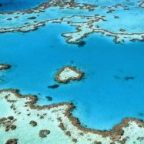
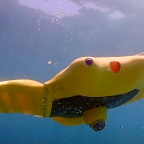
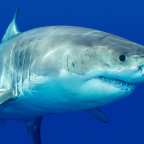

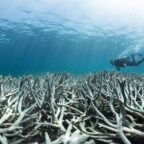
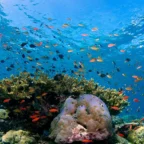

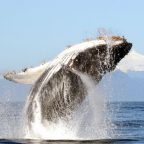
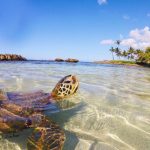
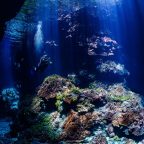


Social Profiles